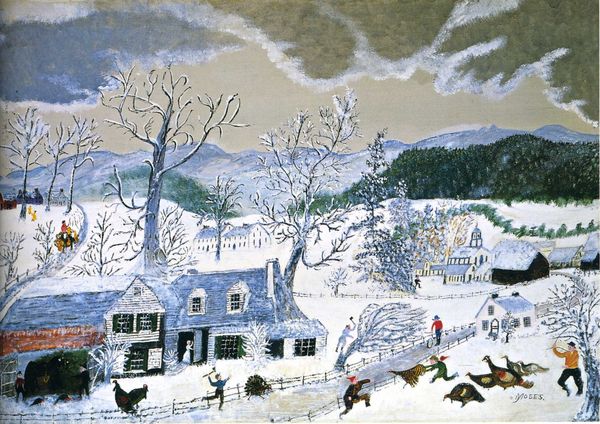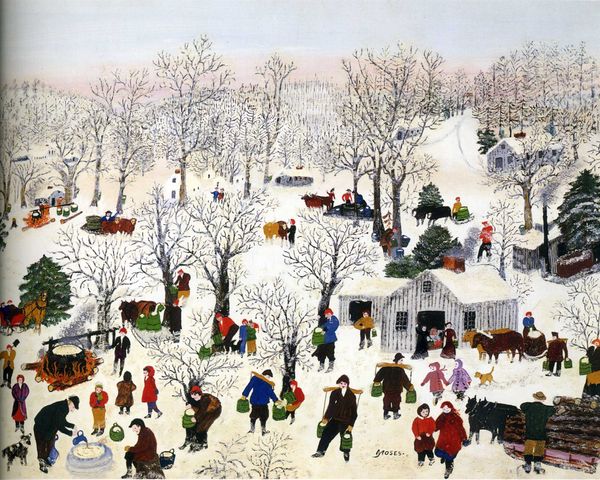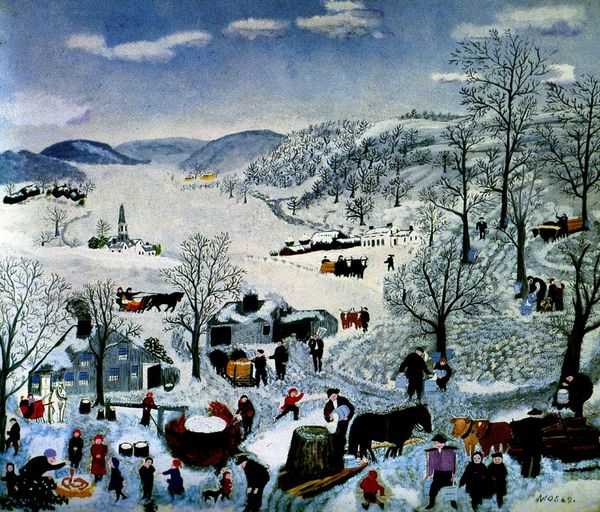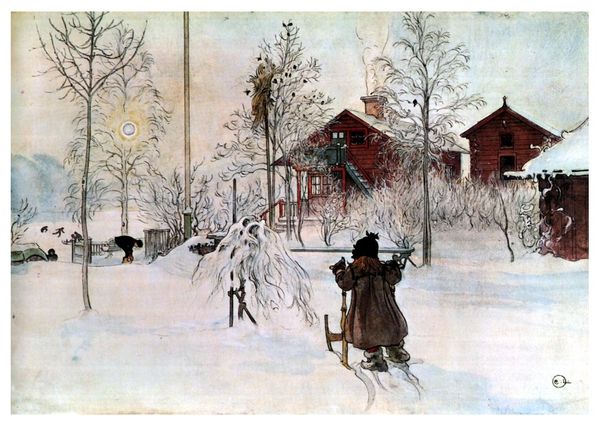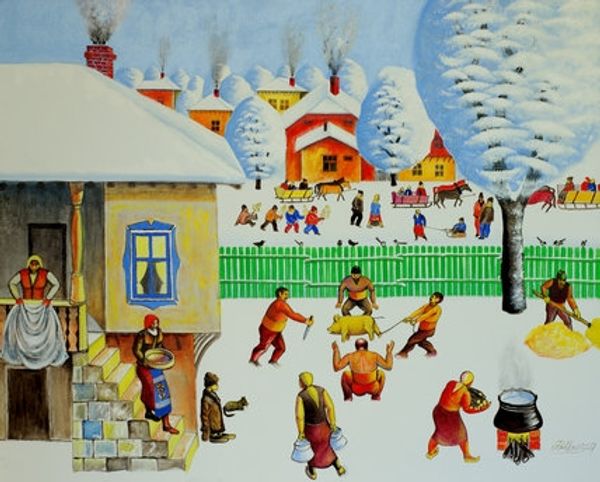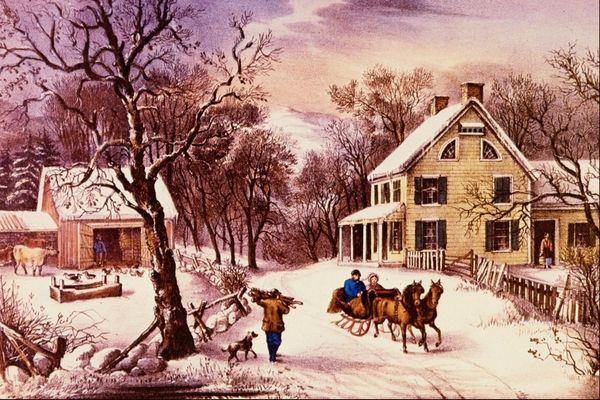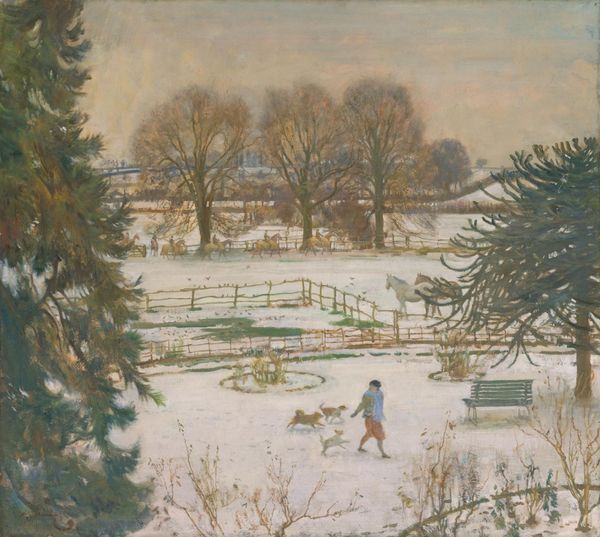
tempera, painting
#
snow
#
tempera
#
painting
#
landscape
#
winter
#
road
#
folk-art
#
naive art
#
genre-painting
Copyright: Grandma Moses,Fair Use
Editor: Here we have "Catching the Turkey," a 1940 tempera painting by Grandma Moses. It's such a lively scene, a winter landscape absolutely bustling with figures. It almost feels like stepping into a snow globe. What is your take on it? Curator: It’s a compelling example of how Grandma Moses both documented and shaped the American public’s perception of rural life. This idealized vision, while seemingly simple, resonated deeply during a period of rapid industrialization and urbanization. Note the communal activity, everyone engaged in this pursuit of the turkey—a shared task leading to, presumably, a shared meal. Editor: I see! So the painting wasn’t just capturing reality, but perhaps crafting a narrative of community and tradition? Curator: Precisely. The deliberate creation of "folk art" like this played a role in constructing a national identity. Consider how the art world, particularly museums and galleries, embraced this style as an authentic representation of American values. Is it authentic, though? Or a curated authenticity? Editor: That's fascinating to think about! So it’s not just about what’s in the painting, but about why it gained such popularity? Curator: Exactly. Who was looking at these images? Where were they displayed? What did they *want* to see when they looked at a painting like this? It becomes a social document in itself, not just an image *of* society. How does that impact your perception? Editor: That really shifts my understanding. I initially just saw a quaint winter scene, but now I realize there's so much more to unpack about its historical impact and the audience that embraced it. Thank you. Curator: My pleasure. It shows the power of art to tell a story not only about the past, but about ourselves and how we construct that past.
Comments
No comments
Be the first to comment and join the conversation on the ultimate creative platform.

